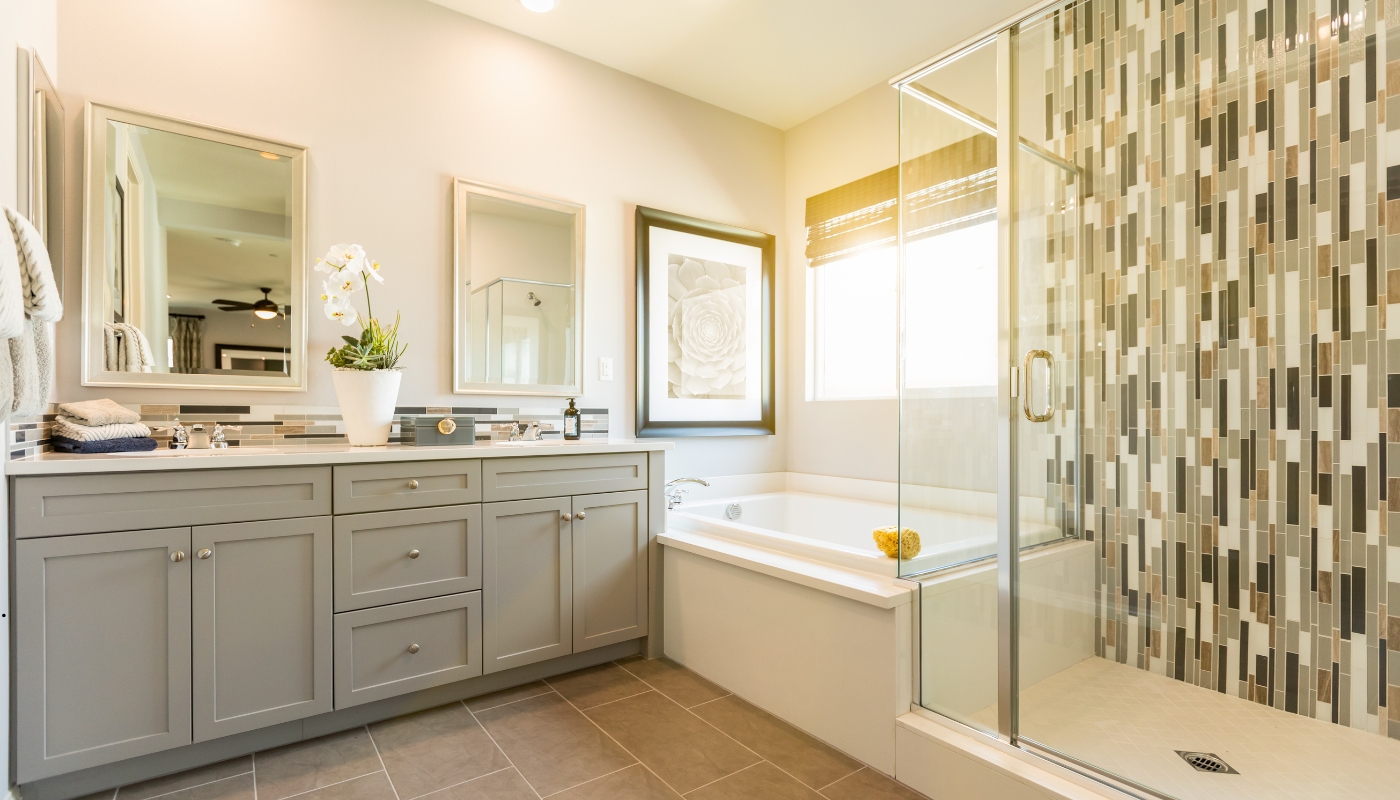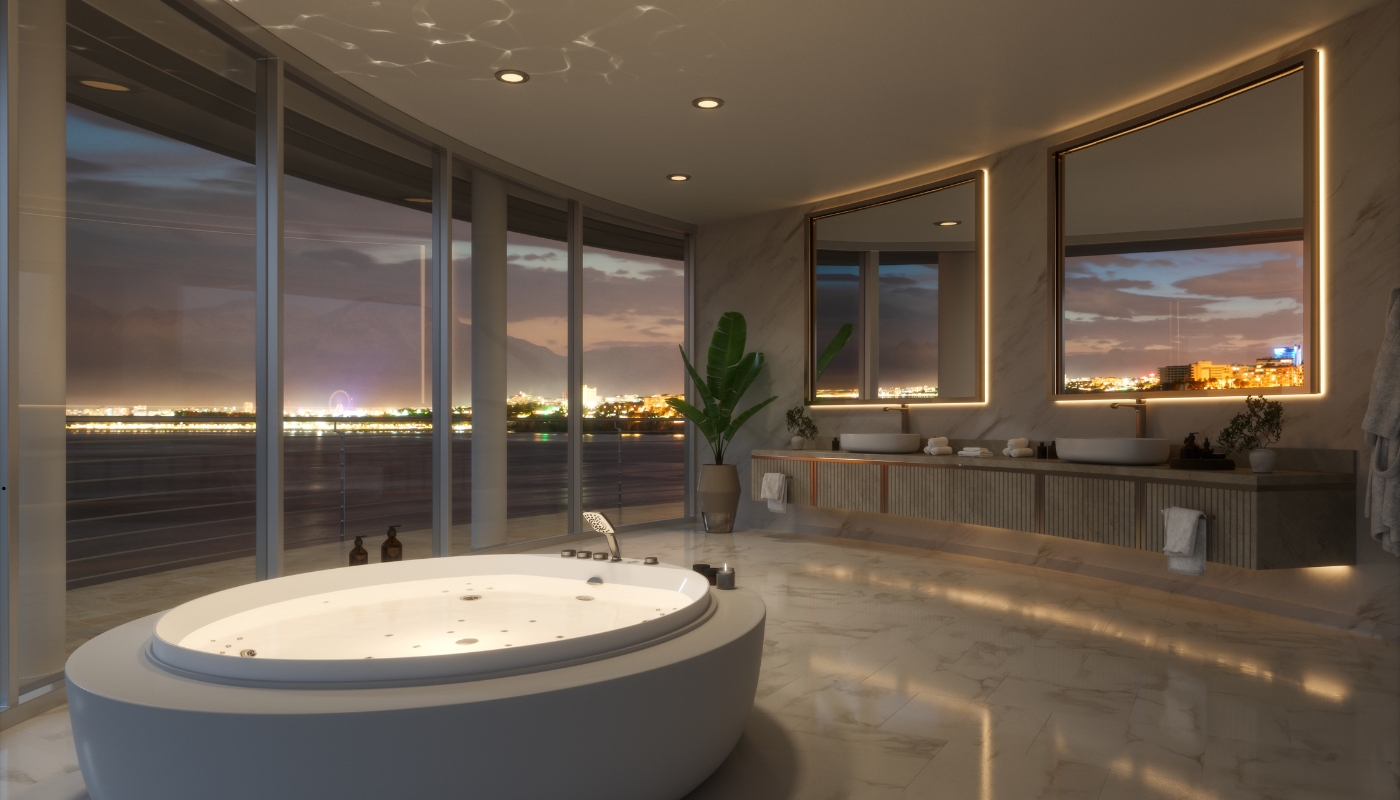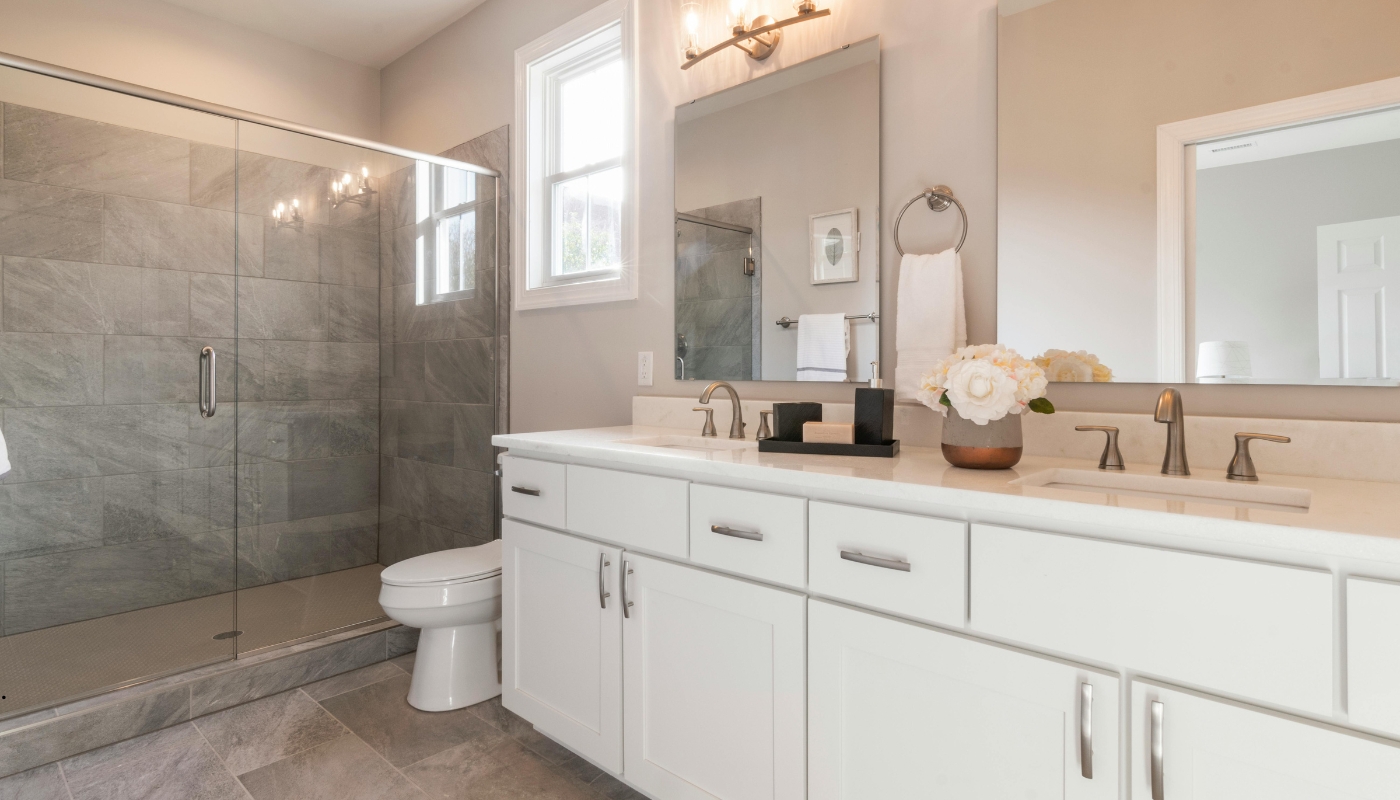Introduction
Why Choose a Classic Bathroom Remodel?
Understanding Remodel California’s Philosophy & Process
The Landscape of Bathroom Remodeling in Granite Bay
Planning Your Classic Bathroom Remodel: Key Steps
Design Ideas for a Classic Bathroom Remodel in Granite Bay
Material Selection & Sourcing
Budgeting & Cost Considerations
Selecting the Right Contractor
Hypothetical Classic Bathroom Remodel in Granite Bay
Maintenance & Longevity for Classic Bathrooms
Why Remodel California
Resources

Introduction
Granite Bay, California—a community nestled amid oak-dotted hills and just east of Folsom Lake—boasts a distinct blend of upscale suburban charm and refined natural beauty. Homeowners here expect quality, elegance, and longevity in every home improvement decision. Among the most transformative upgrades one can undertake is a bathroom remodel—especially when executed in a classic style that endures trends and elevates the home’s value.
At Remodel California, we believe that a timeless bathroom renovation in Granite Bay should do more than just look good—it must function seamlessly, reflect the homeowner’s taste, and stand the test of time. In this article, we’ll explore everything from design principles and contractor selection to material choices, project phasing, and cost considerations to guide you through a successful classic bathroom remodeling journey in Granite Bay.
Why Choose a Classic Bathroom Remodel?
Before diving into the nuts and bolts, let’s define what we mean by classic in the bathroom remodeling world, and why that approach makes sense—especially in places like Granite Bay.
What “Classic” Means
“Classic” doesn’t mean stale. It implies elegance, balance, and enduring appeal rather than following the latest fleeting trends. Key characteristics typically include:
-
Neutral or soft color palettes — whites, creams, soft grays, warm neutrals
-
High-quality materials — marble, natural stone, porcelain, solid wood
-
Timeless fixtures & hardware — polished chrome, nickel, or oil-rubbed bronze
-
Architectural detail — crown moldings, beadboard, wainscoting, subway tile
-
Symmetry and balance — double vanities, pairings, central focal points
Because classic styles age gracefully, they tend to improve resale value and avoid looking dated even after many years.
Why a Classic Remodel Works in Granite Bay
Granite Bay’s residents often favor refined, understated luxury rather than ultra-modern flair. A classic remodel aligns with the architectural character of many homes in the area: craftsman, traditional, transitional, or California-edge styles. Furthermore, classic materials like stone, tile, and neutral tiling are well suited to the local climate—and they don’t go out of style.
By implementing your bathroom remodel with the steady, high-quality approach used by Remodel California, you not only improve daily usability and comfort but also preserve and enhance long-term home value.
Understanding Remodel California’s Philosophy & Process
To shape a long, effective narrative around your remodeling, it helps to understand how Remodel California positions itself, as gleaned from the site. Remodel California
Core Values & Positioning
Remodel California presents itself not just as a contractor, but as a full-service partner in home transformation. They emphasize:
-
Comprehensive services (kitchens, ADUs, room additions, bathrooms) Remodel California
-
Quality craftsmanship, client satisfaction, and design-forward results Remodel California
-
Custom design solutions, tailored to each home and homeowner Remodel California
Thus, in presenting a classic bathroom remodel project, the narrative should emphasize bespoke design, quality materials, and the complete “from foundation to finishing touches” approach.
Their Service Breakdown
While the website doesn’t lay out exhaustive steps, we see major divisions that Remodel California offers:
-
Bathroom Remodeling (a main menu item) Remodel California
-
Countertops, Natural Stone & Granite — critical parts of upscale bathrooms Remodel California
-
Tile Flooring / Backsplash for wet areas and accents Remodel California
-
Custom Cabinets, Door Styles, Storage Solutions, Cabinetry Refacing — all relevant to bathrooms Remodel California
So a classic bathroom remodel narrative should highlight those components as key deliverables.

The Landscape of Bathroom Remodeling in Granite Bay
If you’re reading this as a prospective homeowner or client in Granite Bay, it’s important to understand the local remodeling context: competition, local contractors, styles that resonate, and special considerations.
Local Contractors & Market Context
While Remodel California may be based elsewhere in California, the Granite Bay area has its own pool of active bathroom remodeling contractors. For example:
-
JC Construction offers full custom bathroom remodeling in Granite Bay, including tub-to-shower conversions and luxury finishes. JC Construction
-
SBC Contractors, Inc. emphasizes transforming cramped or outdated bathrooms into spa-like retreats, offering multiple aesthetic styles. sbccontractors.com
-
Dream Home Works markets full-service start-to-finish remodeling in the Sacramento / Granite Bay area. America\’s Dream HomeWorks
-
Rose Remodeling in Northern California specializes in wet space remodeling (showers, tubs, walk-ins, etc.). Rose Remodeling
-
Capital Carpentry in Granite Bay highlights mixes of classic and contemporary styles in its remodels. capital-carpentry.com
These businesses help define the standard one must compete with. A Remodel California–style project in Granite Bay must match or exceed their workmanship, responsiveness, and design sensibility.
Styles Resonating in Granite Bay Homes
From observations of local contractors and interior design firms, certain styles tend to appeal to Granite Bay homeowners:
-
Transitional / Classic: blending traditional trim and materials with modern amenities
-
Farmhouse touches: white beadboard, simple vanities with shaker cabinetry
-
Mediterranean accents: arched niches, stucco, warm tile
-
Spa-inspired: steam showers, freestanding tubs, large-format neutral tile
A classic remodel in this region often means merging elegance and comfort—avoiding ultra-minimal or ultra-ornate extremes.
Challenges & Local Considerations
-
Permitting: Granite Bay falls under Placer County / local municipalities, so plumbing, electrical, and structural changes usually require permits.
-
Climate & durability: Although it’s not a humid-tropical region, water exposure in baths is intense. Materials must resist moisture, mold, cracking, and warping.
-
Matching existing architecture: Many homes have wood trim, craftsman influence, or classic exteriors. Your bathroom remodel should not feel jarringly modern.
-
Logistics and staging: Access, plumbing tie-ins, demolition waste disposal, and coordinating trades in the region must be well planned.
Understanding the local landscape ensures the remodel is feasible, well integrated, and competitive.
Planning Your Classic Bathroom Remodel: Key Steps
A great project begins with structured planning. Below is a stage-by-stage roadmap, grounded in Remodel California’s all-in philosophy.
1. Discovery & Visioning
-
In-home consultation / site visit: Collect measurements, observe existing conditions (plumbing, electrical, structural), note challenges (e.g. sloped ceilings, ingress/egress).
-
Lifestyle interviews: How many users? Accessibility needs? Do you want a soaking tub, steam shower, double vanity? Prioritize comfort, usage patterns, and future needs (aging in place, resale).
-
Inspirations & design direction: Gather images, mood boards, tile samples, hardware catalogs. Decide on style (classic / transitional), color palette, material feel.
-
Initial budget alignment: Based on scope, materials, and region, set a realistic budget range. Use local benchmarks (e.g. from Granite Bay contractors) to calibrate.
2. Schematic Design & Layout
-
Space plan / circulation: Ensure entry clearance, door swing, access to toilet, shower, vanities, cabinetry.
-
Wet zone separation: Placement of shower, tub, wet walls, drainage.
-
Lighting & ventilation: Plan ambient, task, and accent lighting. Place exhaust fans suitably. Include natural light if possible (skylights, windows).
-
Electrical / plumbing rough-in plan: Lay out switch, outlet, drains, hot/cold supply. Ensure locals code compliance.
-
Cabinet, countertop, tile layouts: Decide cabinet sizes, quartz/stone slab layout, tile pattern and focal walls.
3. Design Development & Selections
At this step, you finalize all the material and finish selections:
-
Cabinetry & millwork: Design custom vanities or semi-custom, choose door styles (shaker, frame & panel), finishes, wood species. Remodel California’s site shows they offer custom cabinets and cabinetry refacing. Remodel California
-
Countertops & stone: Select granite, marble, quartz, or engineered stone. Remodel California lists “Natural Stone & Granite,” indicating expertise here. Remodel California
-
Tile & backsplashes: Choose wall tile, floor tile, accent bands, mosaic insets. Remodel California includes “Tile Flooring / Backsplash” among its services. Remodel California
-
Fixtures & plumbing: Faucets, shower trim, tub fillers, drains—choose finishes (chrome, nickel, bronze).
-
Hardware & accessories: Drawer pulls, towel bars, robe hooks, mirrors.
-
Lighting: Vanity sconces, overhead, recessed, decorative lighting.
-
Glass partitions / doors: Frameless, semi-frameless, hardware finish.
-
Paint, trim, ceilings: Moisture-resistant drywall, molding, wall finishes.
A typical remodeler will present you with a full “design packet” showing all these elements in a coordinated palette.
4. Engineering, Permits & Final Documentation
-
Structural review: If opening walls, adding skylights, or changing roof/ceiling, a structural engineer may need to sign off.
-
Electrical & plumbing plans: Must comply with California / Granite Bay / Placer County codes.
-
Permit submission & review: Expect a few weeks for approval before work begins.
-
Shop drawings & mockups: For complex cabinetry, tile patterns, or niches, build full-scale mockups or shop drawings.
5. Demolition & Rough-In
-
Protection & site prep: Seal off adjacent rooms, protect flooring, debris paths.
-
Demo: Remove old fixtures, tile, subfloor, drywall as needed.
-
Rough plumbing & electrical: Install drain, supply lines, junction boxes.
-
Framing / carpentry: Build out niches, soffits, blocking for grab bars or heavy mirrors.
-
Inspect: Rough-in inspection by jurisdiction before covering up.
6. Water-Resistive Barrier & Prep Work
-
Waterproofing: Use membranes behind tile, wet wall systems, curb detailing.
-
Backer boards or cement boards: For tile walls and floors.
-
Slope floor / curb toward drain: Ensure proper drainage in showers.
-
Final layout verification: Confirm tile layout, vanity locations, fixture positions before final installation.
7. Finish Installation
-
Tile work: Walls, flooring, accent strips, shower pan.
-
Cabinet & vanity installation: Level, anchor, adjust.
-
Countertop / stone setting: Seaming, polishing, overhangs.
-
Fixture installation: Sinks, faucets, shower trim, tub fillers, toilets.
-
Glass / partitions: Install and seal.
-
Lighting & electrical trim: Fixtures, switches, GFCIs, fans.
-
Finish carpentry / trim: Baseboards, crown, vent covers.
-
Painting & wall finishes: Touch-ups, sealing, caulking.
-
Accessories & mirrors: Hardware, towel bars, shower niches.
8. Testing, Punch & Handover
-
Leak tests: Run water, inspect for leaks under tile, behind walls.
-
Electrical checks: Verify all lights and outlets function.
-
Punch list: Walk through with client to note deficiencies.
-
Client orientation: Show how drains, valves, maintenance work.
-
Final cleanup: Remove debris, polish finishes.
9. Post-Completion Support & Warranty
Remodel California emphasizes long-term client satisfaction—so offering a workmanship warranty, follow-up visits, maintenance guidelines, and warranty registration for appliances / fixtures is essential.
Design Ideas for a Classic Bathroom Remodel in Granite Bay
To make your remodel visually compelling and uniquely attuned to Granite Bay, here are several design ideas and strategies you could consider—accompanied by best practices for execution.
Neutral Base with Artistic Accents
-
Use a neutral tile base (white, cream, light gray) everywhere, and then insert accent bands or mosaic in one focal strip (behind the vanity, niche, or shower wall).
-
Accent tiles could be a tempered glass mosaic, interspersed stone, or a colored ceramic to draw the eye.
Subway Tile + Herringbone Floor
-
Classic white subway tile (3×6 or 4×8) with classic grout lines is a timeless wall choice.
-
Pair with herringbone or basket-weave patterned floor tile in marble or porcelain. The pattern adds visual interest while staying rooted in classic aesthetics.
Dual Vanities with Symmetry
-
In larger master bathrooms, install dual vanities with matching mirrors and sconces to create harmonious balance.
-
Mirror frames, cabinet door styles, and lighting should mirror each other.
Freestanding Tub & Centered Focal Wall
-
If space allows, place a freestanding tub centered on a focal wall (e.g. beneath a window, or framed by fluted paneling).
-
Flank it with sconces or recessed niches to frame the tub elegantly.
Built-in Niche and Recessed Shelving
-
In showers or wet walls, recessed niches are practical and visually clean.
-
Consider trim borders or accent-tiled backs to make the niche a design feature.
Classic Hardware & Finishes
-
Polished chrome, polished nickel, and satin nickel are safe, enduring finishes.
-
Bronze or oil-rubbed bronze can also work if the home already has warm hardware elsewhere.
-
Use consistent finish across plumbing, lighting, and accessories.
Architectural Custom Millwork
-
Crown moldings, wainscoting, raised panels, beadboard—these features lend a rich, vintage touch.
-
For example, installing a half-height beadboard wall with painted cap trim adds visual depth without overwhelming the space.
Accent Lighting & Skylights
-
Add skylights or solar tubes where possible for natural light.
-
Use wall sconces, LED under-vanity lighting, and recessed downlights for multi-layered illumination.
Warm Woods & Stone Mixed
-
Combine painted or stained wood cabinetry (e.g. white, off-white, or soft taupe) with natural stone countertops (granite, marble, quartzite).
-
The contrast of warm wood tones and cool stone surfaces feels classic and timeless.
Seamless Glass Dividers & Frameless Doors
-
Use frameless glass shower walls to maintain visual clarity and showcase tile work.
-
Where hardware is needed, choose minimal and elegant brackets in matching finish.

Material Selection & Sourcing (with a Remodel California Emphasis)
To achieve a classic look that lasts, material quality is paramount. Because Remodel California already offers services for Natural Stone & Granite and Tile Flooring / Backsplash, those should be cornerstone components of the remodel. Remodel California
Stone & Granite Countertops
-
Select high-quality granite or natural stone slabs for vanity tops and maybe wet walls.
-
Pay attention to slab consistency (veining alignment, thickness).
-
Use epoxy or resin fills for minor final holes rather than patching.
-
Route edges in classic profiles—ogee, bullnose, bevel.
Tile & Waterproofing
-
Waterproofing is non-negotiable. Use quality liquid membranes, sheet membranes, or full red guard systems in showers and wet areas.
-
Use cement backer boards or special tile boards behind walls and floors.
-
For tile, choose vitrified porcelain or marble options with low absorption rates.
-
Use proper back-buttering, grout joints, and expansion spacing.
Cabinetry & Millwork
-
Use solid plywood box construction, ideally with dovetail drawers.
-
Opt for durable finishes—catalyzed lacquer, conversion varnish, or durable paint systems.
-
Include solid wood face frames and quality hinges (soft-close) and drawer slides.
-
Use proper moisture protection inside cabinets (e.g. laminated bottoms, sealed backs).
Fixtures & Plumbing
-
Stick to brands with good warranties (Moen, Delta, Kohler, Grohe) in finishes that match your design.
-
Ensure pressure balance, thermostatic mixing, and quality valves behind trim.
-
Use high-efficiency toilets, faucets, and fixtures to align with modern water-conservation codes.
Glass & Hardware
-
Use tempered, clear “low-iron” glass for frameless panels.
-
Choose high-quality hardware: pivot hinges, minimal clamps, matching finish.
-
Seal edges carefully with matching color silicone.
Lighting & Electrical
-
Use damp- or wet-rated lighting, especially near showers.
-
Include task lighting near vanities, ambient lighting, and accent lighting (LED tape beneath cabinets).
-
Install GFCI-protected outlets, motion sensors, or dimmers for flexibility.
Paint & Finishes
-
Use mildew-resistant paint or semi-gloss in moisture-prone areas.
-
Caulk and seal all transitions (tile to wall, glass to tile, trim to tile) carefully.
-
Ensure ventilation is adequate to remove humidity quickly.
Budgeting & Cost Considerations
No remodel is complete without thoughtful budgeting—and bathroom remodels are infamously unpredictable. According to Better Homes & Gardens, the average bathroom remodel can run around $12,204 nationwide, though the range is wide depending on size, scope, and materials. Better Homes & Gardens
What Drives Costs
Key cost drivers include:
-
Scope & scale: Full remodel vs. cosmetic refresh.
-
Structural changes: Moving walls, widening windows, or re-routing plumbing adds cost.
-
Material choices: Premium stone, imported tile, custom cabinetry raise budgets.
-
Labor & skilled trades: Skilled tile setters, electricians, plumbers all add premium wages.
-
Permits & inspections: Local jurisdiction fees, plan-check, inspection time.
-
Contingency / hidden problems: Subfloor rot, mold, framing issues often discovered mid-project.
Local Benchmarking & Estimates
In Granite Bay and the greater Sacramento area, high-end bathroom remodels (luxury materials, full reconfiguration) often run in the $20,000–$40,000+ range, while mid-tier classic remodels might be $12,000–$25,000 depending on finishes. (Comparable local contractors like JC Construction or SBC Contractors implicitly support those ranges.) JC Construction+2sbccontractors.com+2
A good rule of thumb: budget 25–35% of that high-end number for contingencies (i.e., always include at least a 10–15% buffer).
Cost-Saving Strategies (Without Compromising Classic Quality)
-
Reuse existing plumbing locations when possible to avoid costly rerouting.
-
Limit structural changes (don’t move walls unless absolutely necessary).
-
Balance materials—use premium stone on the primary vanity wall, but simpler quartz or porcelain elsewhere.
-
Stick to standard cabinetry sizes instead of fully custom for minor cabinets.
-
Shop slab yards wisely—you may find seconds or remnant slabs that match your needs.
-
Pick efficient tile sizes with minimal cutting (e.g. modular sizes).
-
Negotiate contractor allowances for finishes (tile, lighting) to provide you a margin.
Payment & Scheduling
-
Contractors often ask for a deposit, then staged payments (e.g. 25% deposit, 25% after demo, 25% after rough-in, 25% at completion).
-
Avoid paying too far ahead, and always tie payments to deliverables.
-
Expect delays due to permitting, material lead times, or weather.
Selecting the Right Contractor (Aligned with Remodel California’s Approach)
One of the most critical decisions in your remodel is who you hire. Because Remodel California positions itself as a full-service, high-quality firm, the hiring narrative must reflect that standard.
1. Vet Credentials & Licensing
-
Confirm valid California contractor’s license (in the proper classification)
-
Confirm insurance & bonding
-
Ask for recent references and prior job walkthroughs
-
Check for complaints with the California Contractors State License Board (CSLB)
2. Request Multiple Quotes with Line-Item Detail
-
Ensure quotes include scope, materials, labor, permits, disposal, contingencies
-
Ask for allowances itemized (tile, lighting, stone)
-
Avoid vague proposals—require specificity
3. Review Portfolios & Past Work
-
Insist on seeing full finished bathrooms (not just staged photos)
-
Look for consistency, craftsmanship, attention to detail
-
Ask to see material samples or mockups they’ve built
4. Communication & Project Management Approach
-
The contractor should provide a detailed schedule, day-by-day or week-by-week
-
They should commit to regular updates, site cleanup protocols, and client transparency
-
The contract should include change order procedures and dispute resolution mechanisms
5. Warranties & Post-Completion Support
-
A reputable firm should provide a workmanship warranty (e.g. 1–2 years)
-
They should help register manufacturer warranties
-
They should commit to at least one follow-up visit to check for issues
6. Aligning with Remodel California Standards
Because Remodel California emphasizes being your “dedicated partner” in California home transformations and handles everything from design to finishing touches, you should seek a contractor who offers:
-
Full in-house design or design-build
-
Coordination of all trades (plumbing, electrical, tile, carpentry)
-
Access to stone / tile / cabinetry showrooms
-
A client-facing communication system (updates, photos, approvals)
When evaluating a contractor, interview them as though they are Remodel California—ask if they can deliver your design vision end-to-end, including permits, engineering, and warranty support.
Case Study: Hypothetical Classic Bathroom Remodel in Granite Bay
To bring all of these concepts together, here’s a hypothetical project narrative you could use as a template:
Project Overview
-
Home: 1995-era craftsman-style house in Granite Bay
-
Existing bathroom: 8 ft x 12 ft master bath, including alcove tub, small shower, dated tile and cabinetry
-
Goal: Remodel into a classic, spa-like retreat with a freestanding tub, walk-in shower, and double vanities
Phase 1: Discovery & Visioning
-
The client expresses desire for a calm, spa-like feeling, with white and warm taupe tones, natural stone accents, and durable, timeless finishes.
-
They want a free-standing tub beneath a window, a large curbless (but slightly sloped) walk-in shower, and custom vanities with dark wood bases and light stone tops.
-
We establish a budget range of $25,000–$35,000 including all labor, materials, and contingencies.
Phase 2: Schematic Planning
-
The tub is relocated to a wall beneath a large window; the existing tub area is removed.
-
The shower is expanded by shifting a non-load-bearing wall slightly, enabling a double niche system and linear drain.
-
Electrical is upgraded: new lighting, vanity sconces, heated floor controls, and exhaust fans reconfigured.
-
Layout sketches show the symmetry: dual vanities on one wall, pocket door, and towel/wall niches.
Phase 3: Design & Selections
-
Cabinetry: Custom painted shaker-style vanities in soft taupe, soft-close doors, maple veneer interiors.
-
Countertops: Honed white Carrara marble with pencil edge detail.
-
Tile: 3×6 white subway walls, marble herringbone floor inset, border accent tiles in the niche and niche backs.
-
Fixtures: Polished nickel Moen fixtures, a clawfoot-style freestanding tub filler, frameless glass partition.
-
Lighting: LED sconces flanking mirrors, recessed ceiling lights, under-vanity toe-kick lighting.
-
Hardware: Matching polished nickel handles and towel bars.
Phase 4: Permitting & Documentation
-
Electrical and plumbing plans submitted to Placer County jurisdiction; structural review approves shifted walls (they are non-load bearing).
-
Permit issued in 3 weeks; mockups of tile layout and cabinet full-scale drawn for confirmation.
Phase 5: Demolition & Rough-In
-
Old tile, cabinetry, fixtures removed; walls opened.
-
Rough plumbing rerouted with updated PEX or copper as needed.
-
New electrical circuits installed for lighting and heated floor.
-
Framing blocking installed for mirror and hardware support.
-
Rough-in inspection passed.
Phase 6: Waterproofing & Preparation
-
Wet walls sheathed with cement backer board, full waterproof membrane applied.
-
Sloped shower floor with linear drain installed.
-
Tile layout confirmed, backsplashes sized.
Phase 7: Finishes & Install
-
Tile work completed, grout sealed.
-
Vanities leveled, anchored, plumbing connected.
-
Marble slab installed, seams polished.
-
Fixtures fitted, and plumbing trim installed.
-
Glass partitions installed and sealed.
-
Lighting, fans, and electrical trim installed.
-
Painting, caulking, hammer finish, and final accessory installation.
Phase 8: Punch & Final Handover
-
Client walkthrough yields a few minor touchups (grout, caulk, hardware alignment).
-
Leak and pressure tests passed.
-
Final cleanup, orientation to operations (drains, valves).
-
Warranty documentation and maintenance instructions delivered.
Results & Lessons
-
The completed bathroom blends classic whites and soft grays with warm wood and stone accents, creating a relaxing, high-end space.
-
Symmetry, quality materials, and thoughtful detailing (like mosaic niches, hidden storage) elevate the design.
-
Because plumbing locations were reused largely, the budget was controlled.
-
A 10% contingency handled an unexpected subfloor repair discovered during demo.
Clients reported that after the remodel, the bathroom felt twice its previous function—luxurious for daily use and also a showpiece for visitors.
Maintenance & Longevity for Classic Bathrooms
A classic bathroom should last decades. Here are key maintenance practices to protect your investment:
-
Seal stone periodically (especially marble) to prevent staining.
-
Use pH-neutral, non-abrasive cleaners on tile, grout, fixtures.
-
Inspect and recaulk joints annually before problems begin.
-
Keep ventilation strong—run fans during and after use to reduce humidity.
-
Tighten hardware and hinges periodically.
-
For slab counters, clean spills quickly and avoid harsh chemicals.
-
For glass, use squeegees after showers to prevent hard-water spots.
With proper care, your bathroom will preserve that classic beauty for many years.
Conclusion: Why Remodel California Can Deliver the Classic Bathroom You Love
A classic bathroom remodel in Granite Bay is not just about picking pretty materials. It’s about delivering a holistic, well-managed project that:
-
Matches the architectural dignity of your home
-
Uses premium materials (stone, tile, cabinetry)
-
Ensures flawless execution (waterproofing, plumbing, finishes)
-
Provides long-term support and warranty
-
Aligns with local permitting, styles, and homeowner expectations
